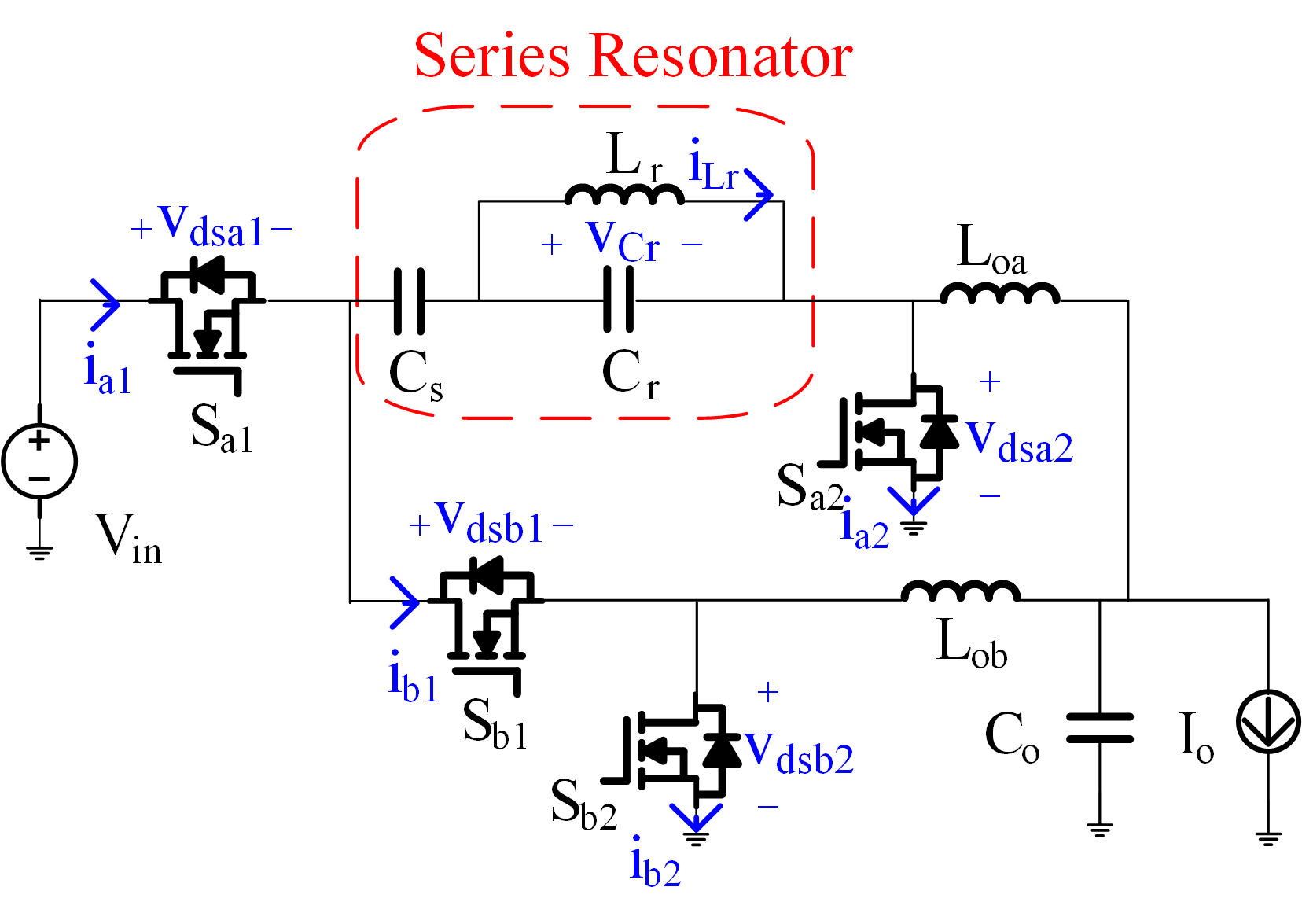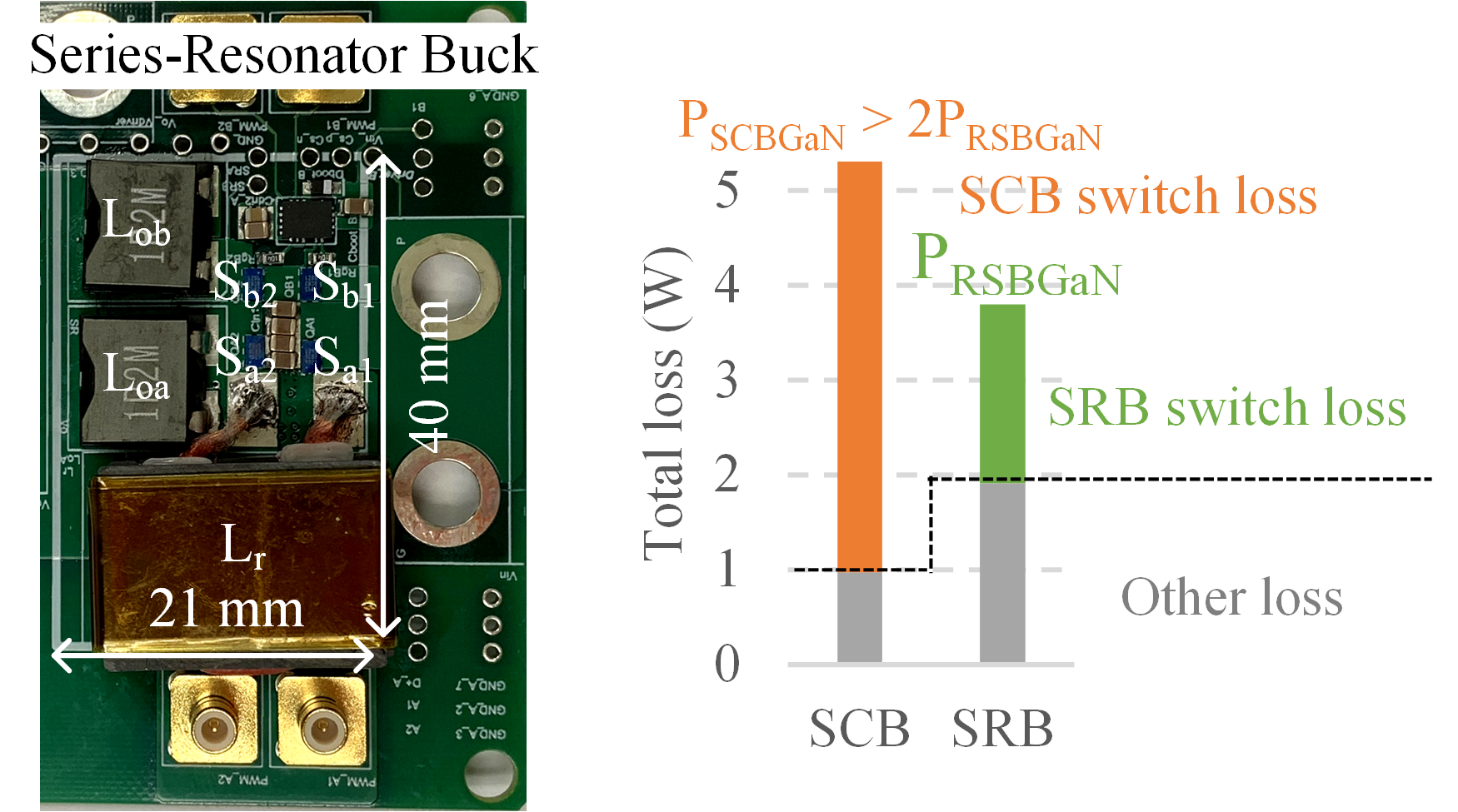LIBRARY
Series-Resonator Buck Converter for Datacenters and Automotive Power Distribution System

The Series Resonator Buck (SRB) converter is synthesized by adding a parallel resonant tank next to the series- capacitor Cs, as demonstrated in Fig. 1. All switches turn on into zero-voltage (ZVOn), and low-side switches turn off from zero-current (ZCOff). No snubber is needed to keep the switches' stresses within the input voltage. A 2-MHz prototype with 48 V at the input, and 7 V, 20 A at the output, was built to verify the design.
The peak efficiency of the RSCB prototype is 98.5%, and the full load efficiency is 97.3%, as shown in Fig. 2. The measured drain-source voltages of all switches at nominal condition are shown. All switches turn on into zero- voltage.























































































